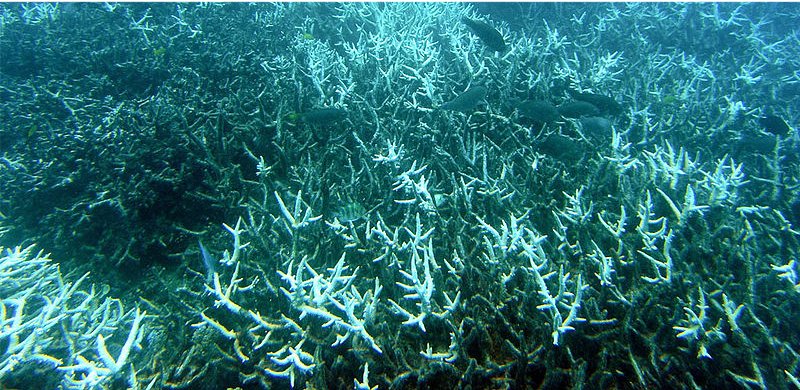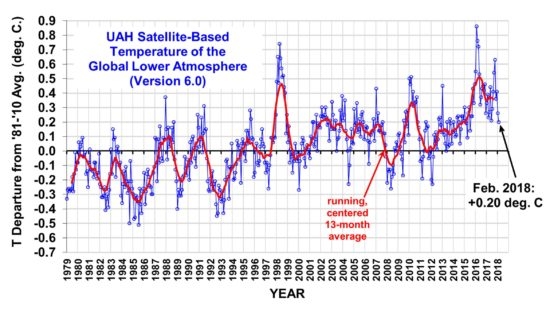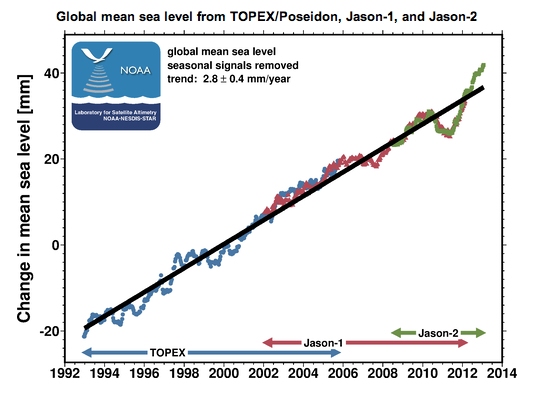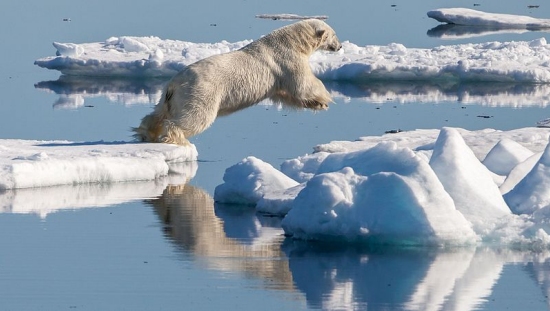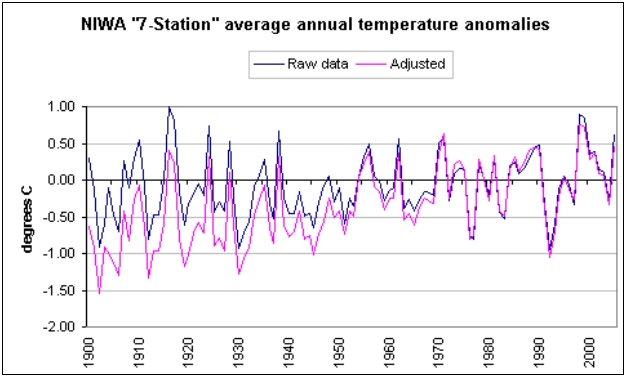
(Figure 6.15 from the study being discussed)
Over the past few years, I have written about problems with the data related to global temperature measurements (see here and here). It is very difficult to get a handle on how the planet’s temperature has changed over the past century or so, because the only long-term data we have come from thermometers that are placed at various spots throughout the world. Since 1979, we have much more accurate global temperature data, which come from satellite measurements. However, those satellite measurements are not consistent with the thermometer measurements.
This is an important issue, because climate models (which make projections about future temperatures based on different emission scenarios) are “calibrated” against the known temperature data in an effort to make them more realistic. Since the satellite data have only been collected since 1979, they are rarely used. Instead, the longer temperature record (based on thermometers) is generally preferred. The two commonly-used thermometer records are GISS TEMP (maintained by NASA) and HadCrut4 (maintained by the University of East Anglia and the UK Met Office). Those two data sets are in good agreement with one another, but once again they do not agree with the satellite data.
Are these thermometer data reliable? Based on the PhD thesis of John D. McLean at James Cook University, the answer is “no.” He did what he claims is the first audit of the reliability of the Hadcrut4 data, and he has found 25 areas of concern. I will discuss only three. First, he finds many instances of anomalous data. One station in Colombia, for example, reports that the 1978 average monthly temperatures in April, June, and July were 81.5 oC, 83.4 oC, and 83.4 oC. In case you aren’t familiar with the Celsius temperature scale, that’s about 180 oF. Given that the highest temperature ever recorded on earth was 134 oF, it’s safe to say that the report from Colombia is simply wrong. He lists many other examples of anomalous data that cannot possibly be correct.


